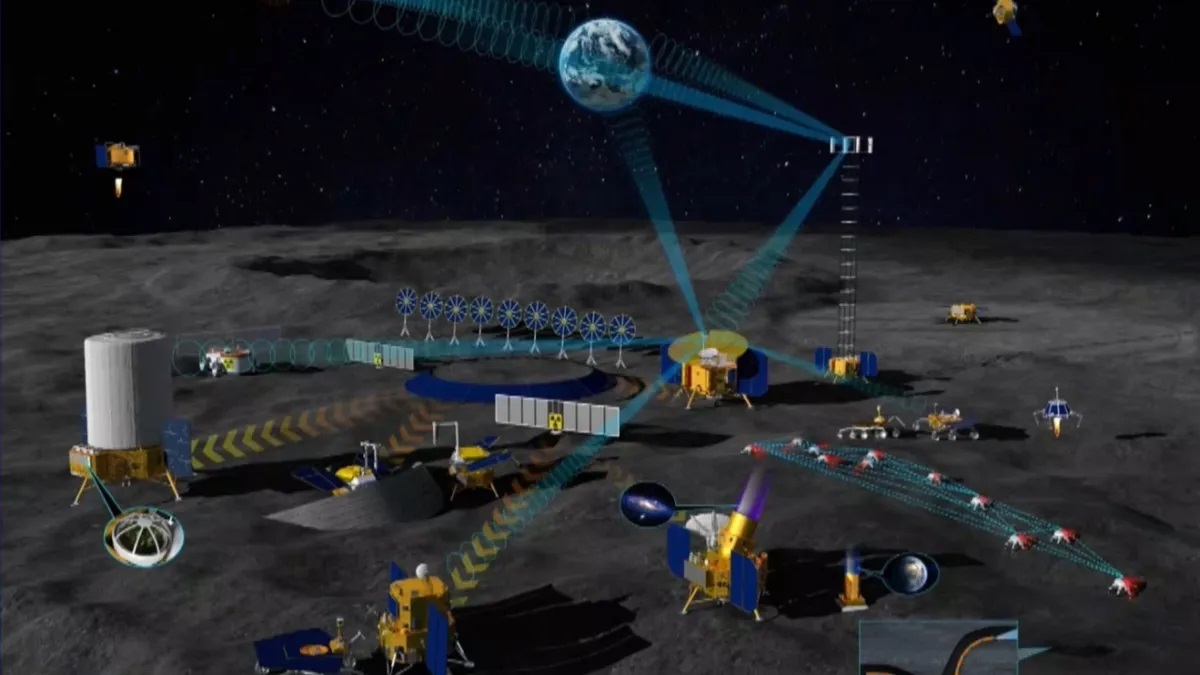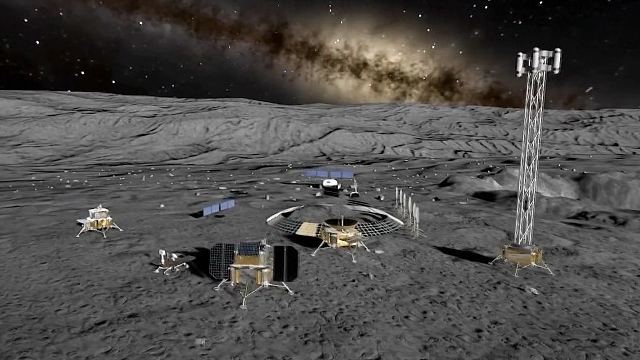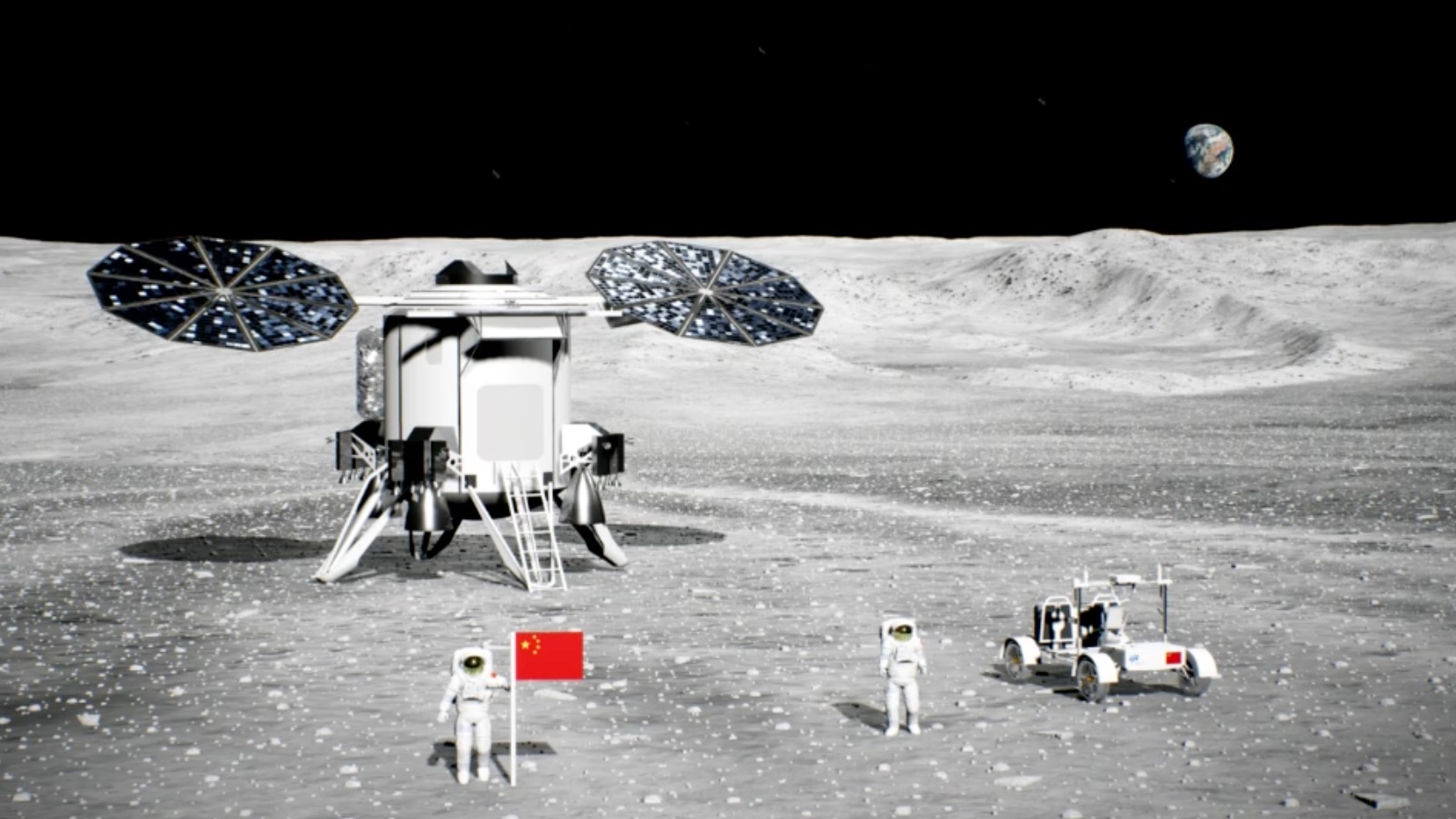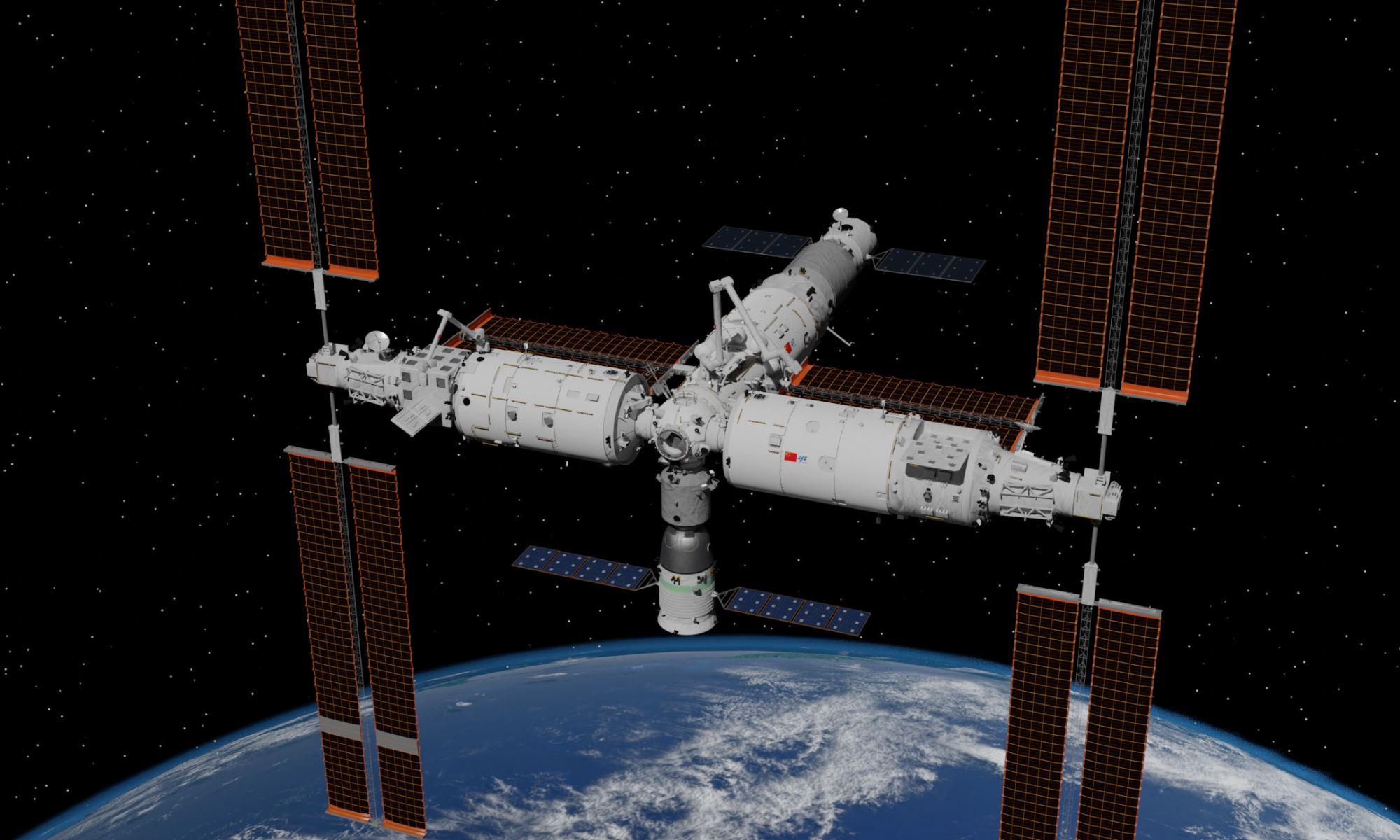China has a fabulously rich history when it comes to space travel and was among the first to experiment in rocket technology. The invention of the rocket is often attributed to the Sung Dynasty (AD 960-1279.) Since then, China has been keen to develop and build its own space industry. The Chinese National Space Administration has already successfully landed probes on the Moon but is preparing for their first human landers. Chinese astronauts are sometimes known as taikonauts and CNSA has just confirmed their fourth batch of taikonauts are set for a lunar landing.
Continue reading “China Trains Next Batch of Taikonauts”China Releases its First Roadmap for Space Science and Exploration Through 2050.
China’s space program has advanced considerably since the turn of the century. In addition to developing heavy-launch vehicles like the Long March 5 and building a modular space station in orbit, China has also embarked on an ambitious program of lunar exploration (Chang’e) – which has launched six robotic missions to explore the Moon’s surface since 2007. These missions are paving the way for crewed missions to the Moon by 2030 and creating a permanent habitat around the Moon’s southern polar region – the International Lunar Research Station (ILRS).
They also plan to send crewed missions to Mars by 2033, which will culminate in the creation of a permanent base there too. Earlier today, the Chinese Academy of Sciences (CAS), the China National Space Administration (CNSA), and the China Manned Space Agency (CMSE) jointly released the country’s first long-term scheme for space science and exploration. Titled “National Medium—and Long-Term Development Plan for Space Science (2024-2050),” this plan elaborated on the basic principles, development goals, and roadmap for the country’s space science and exploration through 2050.
Continue reading “China Releases its First Roadmap for Space Science and Exploration Through 2050.”China Creates a High-Resolution Atlas of the Moon
Multiple space agencies are looking to send crewed missions to the Moon’s southern polar region in this decade and the next. Moreover, they intend to create the infrastructure that will allow for a sustained human presence, exploration, and economic development. This requires that the local geography, resources, and potential hazards be scouted in advance and navigation strategies that do not rely on a Global Positioning System (GPS) developed. On Sunday, April 21st, the Chinese Academy of Sciences (CAS) released the first complete high-definition geologic atlas of the Moon.
This 1:2.5 million scale geological set of maps provides basic geographical data for future lunar research and exploration. According to the Institute of Geochemistry of the Chinese Academy of Sciences (CAS), the volume includes data on 12,341 craters, 81 impact basins, 17 types of lithologies, 14 types of structures, and other geological information about the lunar surface. This data will be foundational to China’s efforts in selecting a site for their International Lunar Research Station (ILRS) and could also prove useful for NASA planners as they select a location for the Artemis Base Camp.
Continue reading “China Creates a High-Resolution Atlas of the Moon”China's Relay Satellite is in Lunar Orbit
On March 20th, China’s Queqiao-2 (“Magpie Bridge-2”) satellite launched from the Wenchang Space Launch Site LC-2 on the island of Hainan (in southern China) atop a Long March-8 Y3 carrier rocket. This mission is the second in a series of communications relay and radio astronomy satellites designed to support the fourth phase of the Chinese Lunar Exploration Program (Chang’e). On March 24th, after 119 hours in transit, the satellite reached the Moon and began a perilune braking maneuver at a distance of 440 km (~270 mi) from the lunar surface.
The maneuver lasted 19 minutes, after which the satellite entered lunar orbit, where it will soon relay communications from missions on the far side of the Moon around the South Pole region. This includes the Chang’e-4 lander and rover and will extend to the Chang’e-6 sample-return mission, which is scheduled to launch in May. It will also assist Chang’e-7 and -8 (scheduled for 2026 and 2028, respectively), consisting of an orbiter, rover, and lander mission, and a platform that will test technologies necessary for the construction of the International Lunar Research Station (ILRS).
Continue reading “China's Relay Satellite is in Lunar Orbit”China Reveals Its Lunar Lander Design
Last May, as part of the nation’s growing presence in space, the China National Space Agency (CNSA) announced that it had established a Human Lunar Space Program that would send crewed missions to the Moon and culminate in the creation of a lunar base. This came shortly after China and Russia announced that they would be collaborating on future lunar missions, which included the creation of a base around the southern polar region. In June 2022, they announced that this base would be named the International Lunar Research Station (ILRS) and released a guide explaining how international partners could join.
On Thursday, August 31st, the China Manned Space Agency (CMSA) released artists’ renderings of their next-generation spacecraft and lunar lander. The spacecraft will consist of two sections, a reentry capsule, and a service section, while the lunar lander will include a landing section and a propulsion section. According to a statement released by the Agency, these vehicles will deliver crews to Low Earth Orbit (LEO) and allow China to send crewed missions to the lunar surface. The release of these images confirms what has been suspected for some time: that China fully intends to land taikonauts on the Moon before 2030.
Continue reading “China Reveals Its Lunar Lander Design”China’s Chang’e-7 Will Deploy a Hopper that Jumps into a Crater in Search of Water Ice
Researchers from the Chinese Academy of Sciences and the Chinese National Space Administration recently published a study in the journal Space: Science & Technology outlining how the upcoming Chang’e-7 mission, due to launch in 2026, will use a combination of orbital observations and in-situ analyses to help identify the location, amount, and dispersion of water-ice in the permanently-shadowed regions (PSRs) of the Moon, specifically at the lunar south pole.
Continue reading “China’s Chang’e-7 Will Deploy a Hopper that Jumps into a Crater in Search of Water Ice”China Will Use Two Rockets to Put Humans on the Moon
As of 2019, China began conducting preliminary studies for a crewed lunar mission that would take place by the 2030s. Two years later, the China National Space Agency (CNSA) and Roscosmos announced a partnership to create an International Lunar Research Station (ILRS) around the South Pole-Aitken Basin. The proposed timeline for development came down to three phases: Reconnaissance (2021-25), Construction (2025-35), and Utilization (2035-onward). Earlier this year, China announced that its space agency would send the first crewed mission to the lunar surface by 2030.
On July 12th, during the 9th China (International) Commercial Aerospace Forum in Wuhan, China, Chinese officials offered additional information about its crewed lunar exploration program. This included Deputy chief engineer Zhang Hailian of the China Manned Space Engineering (CMSE) office announcing the preliminary plan for China’s first crewed lunar mission. As Zhang illustrated with a series of animations, the mission will consist of two carrier rockets launching all the necessary elements to the Moon, which will then rendezvous in orbit and land on the surface to conduct science operations.
Continue reading “China Will Use Two Rockets to Put Humans on the Moon”Three New Astronauts Arrive at the Chinese Space Station, Including the Country's First Civilian
China continues to establish new milestones in space. In recent years, the China National Space Agency (CNSA) has begun assembling the Long March-9 (CZ-9), the country’s first reusable super-heavy launch vehicle; the Tianwen-1 mission became the first Chinese orbiter, lander, and rover combination to reach Mars, and their super-secret spaceplane completed its second flight (after spending 276 days in space). China has also made significant progress in terms of human spaceflight, especially where the Tiangong space station is concerned.
Earlier this week (Tues. May 30th), the China Manned Space Agency (CMSA) took another major step when it launched the country’s sixteenth mission (Shenzou-16) to Tiangong atop a Long March-2F (CZ-2F) rocket. This mission delivered three taikonauts to the space station and performed the most complicated docking maneuver ever attempted. The mission highlights included successfully testing the Shenzou’s upgraded instruments and systems, which allowed the spacecraft to autonomously rendezvous with the station under less-than-ideal conditions.
Continue reading “Three New Astronauts Arrive at the Chinese Space Station, Including the Country's First Civilian”Glass Fibers in Lunar Regolith Could Help Build Structures on the Moon
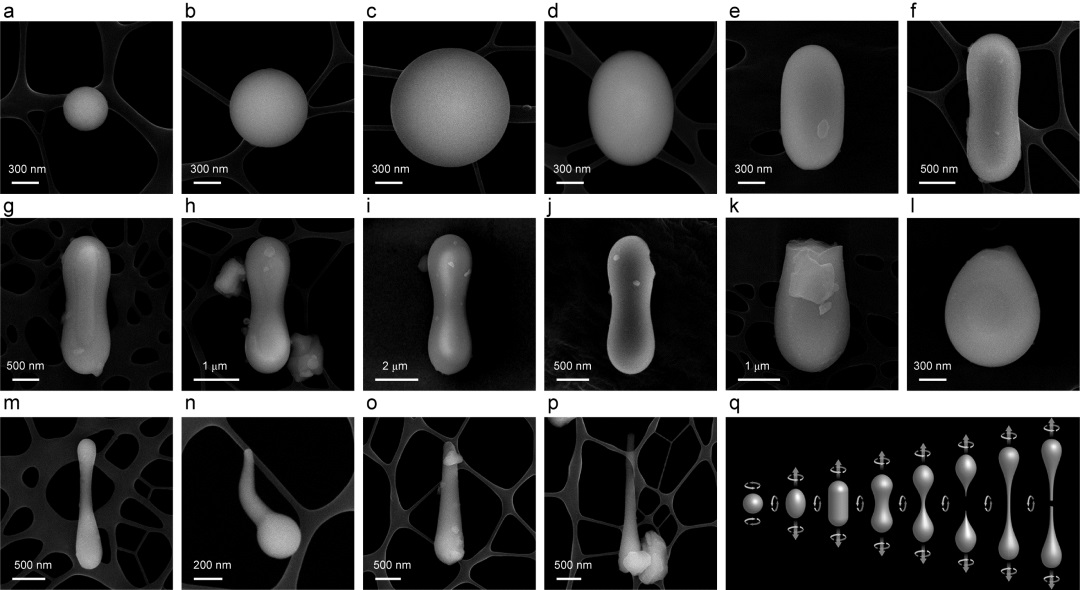
Through the Artemis Program, NASA plans to send the first astronauts to the Moon in over fifty years. Before the decade is over, this program aims to establish the infrastructure that will allow for a “sustained program of lunar exploration and development.” The European Space Agency (ESA) also has big plans, which include the creation of a Moon Village that will serve as a spiritual successor to the International Space Station (ISS). China and Roscosmos also came together in June 2021 to announce that they would build the International Lunar Research Station (ILRS) around the lunar south pole.
In all cases, space agencies plan to harvest local resources to meet their construction and long-term needs – a process known as In-Situ Resource Utilization (ISRU). Based on samples returned by the fifth mission of the Chinese Lunar Exploration Program (Chang’e-5), a team of researchers from the Chinese Academy of Sciences (CAS) identified indigenous glass fibers for the first time. According to a paper they authored, these fibers were formed by past impacts in the region and could be an ideal building material for future lunar bases.
Continue reading “Glass Fibers in Lunar Regolith Could Help Build Structures on the Moon”China is Planning to Land Humans on the Moon by 2030 as Part of its Ambitious Lunar Agenda

Weiren Wu, the Chief Designer of the Chinese Lunar Exploration Program (CLEP), recently announced an ambitious plan to put Chinese footprints on the lunar surface by 2030. This announcement came just prior to this year’s Space Day of China, an annual event celebrated on April 24th meant to showcase the space industry achievements of the China National Space Administration (CNSA).
Continue reading “China is Planning to Land Humans on the Moon by 2030 as Part of its Ambitious Lunar Agenda”




